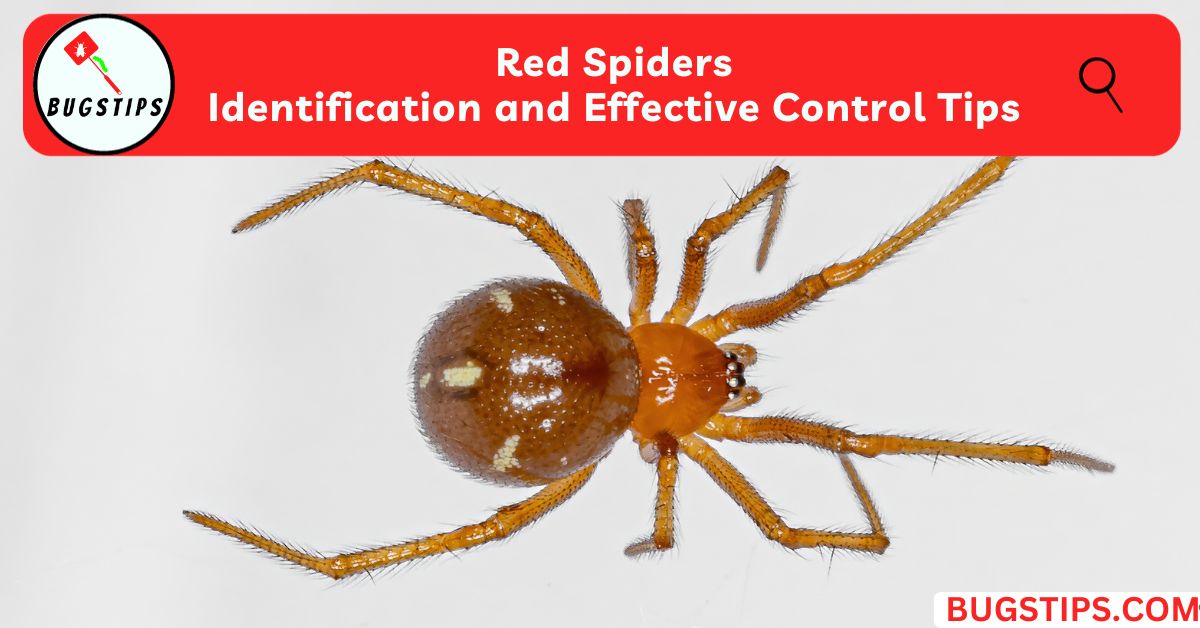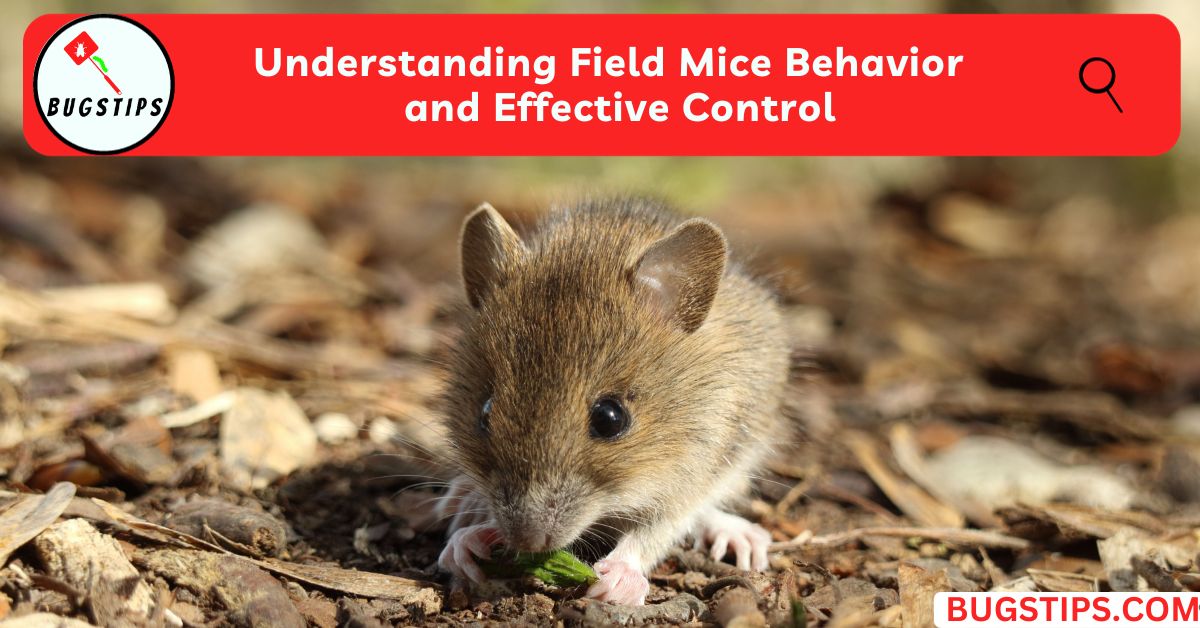This post may contain affiliate links which means as an Amazon Associate, this site may earn a small commission on qualified purchases made through links at no extra cost to you. Learn more on Affiliate Disclosure
Small pellets found around your home or yard can be a source of confusion – are they squirrel or rat droppings?
While these two animals may look similar to the untrained eye, their droppings have distinct characteristics that set them apart.
In this article, we’ll take a closer look at squirrel poop vs rat poop, and explore how you can identify the differences between the two.
We’ll cover topics such as the appearance, composition, and texture of these droppings, as well as common questions about their potential dangers and habits.
So, whether you’re dealing with a rodent problem or simply curious about the topic, read on to learn more about squirrel and rat poop.
You May Also Like – Do Spiders Poop? The Truth Behind Arachnid Waste
Squirrel Poop vs Rat Poop | Key Differences
Before we dive into the details of squirrel poop vs rat poop, here’s a table that summarizes the key differences between these two types of droppings.
Remember that while these differences can help identify the animal responsible for the droppings, other factors such as location and behavior can also provide clues.
In the following sections, we’ll discuss these differences in more detail.
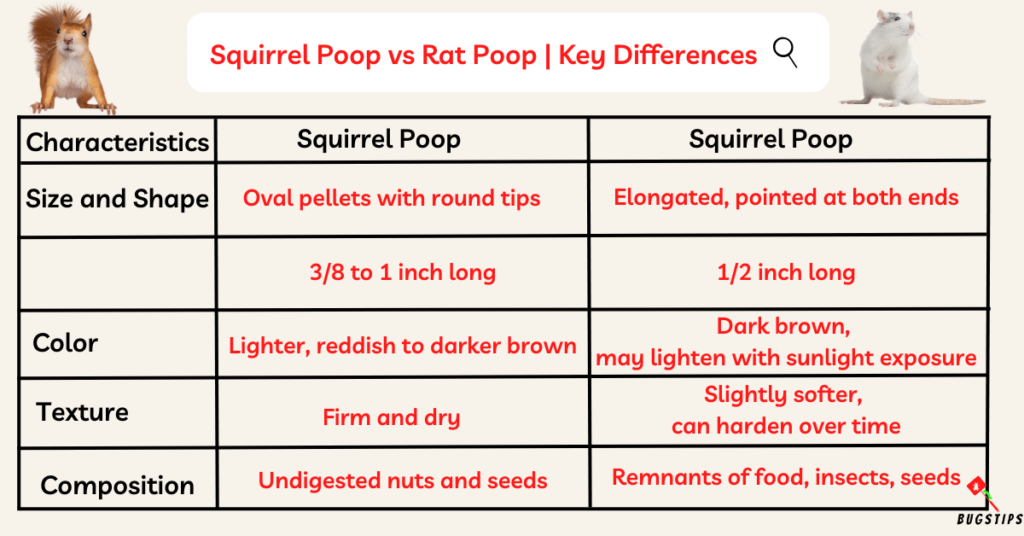
You May Also Like – Can Squirrels Die From Falling?
Squirrel Poop | How to Identify
What Does Squirrel Poop Look Like?
If you’ve been wondering what squirrel poop looks like, here are the key characteristics that can help you identify it.
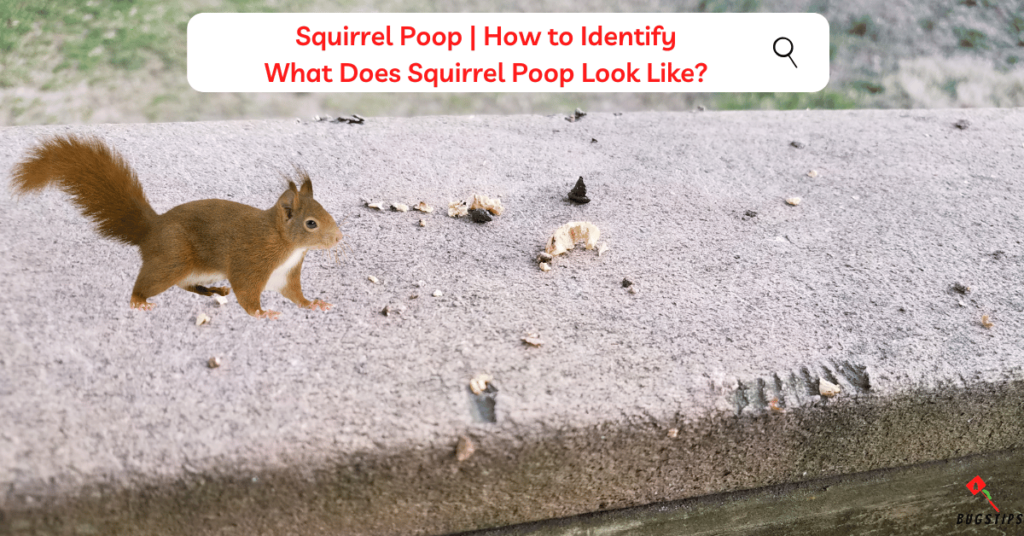
Size and Shape
- Squirrel poop is typically oblong or oval pellets with round tips.
- They are smaller in size compared to rat droppings, usually measuring around 3/8 to 1 inch in length and 1/8 inch in diameter.
Color
- Fresh squirrel droppings tend to have a dark brown color, similar to that of chocolate.
- Over time, the color may fade to a lighter shade, ranging from reddish or rusty brown to a darker brown.
Texture
- Squirrel poop has a firm texture and is usually dry due to the squirrel’s herbivorous diet.
- This distinguishes it from the moist droppings of animals that consume meat.
Composition
- Squirrel poop is composed of undigested remnants of the squirrel’s diet.
- It commonly contains seeds, nuts, and bits of plant material like leaves or bark, depending on what the squirrel has been eating.
Overall, squirrel poop is smaller and drier than rat poop, and has a distinct shape and color. If you're unsure whether the droppings you've found are from a squirrel or another animal, you can use these characteristics to help you make an informed identification.
Related Article – Snake Poop 101 | A Comprehensive Guide
Squirrel Poop
Is Squirrel Poop Dangerous?
Squirrel poop is generally not considered dangerous to humans, although it’s always a good idea to take precautions when cleaning up any type of animal droppings.
One potential risk associated with squirrel poop is the transmission of diseases.
Squirrels can carry a variety of diseases that can be transmitted to humans, such as leptospirosis and salmonella.
However, the risk of contracting these diseases from squirrel droppings is relatively low and can be further reduced by wearing gloves and a face mask while cleaning up the droppings.
Another risk associated with squirrel poop is the potential for allergic reactions.
Some people may be allergic to the proteins in squirrel urine or feces, which can cause symptoms such as sneezing, itching, and respiratory problems.
In addition to these risks, squirrel droppings can also attract other pests such as flies, roaches, and rodents, which can create additional health hazards.
Related Article – What Does Lizard Poop Look Like?
Where Do Squirrels Poop?
Squirrels are arboreal animals, which means that they spend most of their time in trees. As a result, they tend to do most of their pooping in trees as well.
Here are some common places where squirrels may poop.

Tree Branches
- Squirrels often use tree branches as natural pathways, which makes them convenient spots for them to leave their droppings.
- As they traverse from one branch to another, they may drop their scat along their routes.
Attics
- If squirrels find their way into your attic, you might come across their droppings near their nesting areas or along the eaves.
- Squirrels may use attics as sheltered locations, and their poop can accumulate in these areas.
Gardens and Flowerbeds
- Squirrels sometimes dig up plants or bury their food in gardens.
- In the process, they may leave behind droppings.
- Keep an eye out for squirrel poop in and around your garden or flowerbeds.
Outdoor Furniture or Decks
- Squirrels may visit outdoor areas such as decks or furniture.
- These spots provide opportunities for them to chew on wood, relax, or take a break.
- As a result, you might find squirrel droppings in these areas.
It's worth noting that squirrels don't have a specific designated spot for pooping, so their droppings can be found in a variety of places. However, they do tend to favor certain areas where they feel safe and secure, such as the branches of a tree or inside their nests.
Related Article – 16 Powerful Scents That Repel Chipmunks
Does Squirrel Poop Smell?
Squirrel poop does have a distinct smell, although it’s generally not strong or offensive.
The odor of squirrel droppings can vary depending on how old they are and what the squirrel has been eating.
Fresh squirrel droppings may have a slightly musky odor, but it’s not usually strong enough to be noticeable unless you’re up close.
As the droppings age, they may start to dry out and lose their odor.
One thing to keep in mind is that the smell of squirrel droppings can attract other pests, such as flies and rodents, which can create additional problems.
If you notice a lot of squirrel droppings in one area and are concerned about the smell, it’s a good idea to clean them up as soon as possible.
You May Also Like – Managing Rats in Sewers
Do Squirrels Bury Their Poop?
Squirrels do not have a specific location where they bury their poop.
Instead, they tend to defecate as they walk, which means that their droppings can be found scattered or bunched in areas where they are active, such as the bases of trees, bird feeders, attics, and roofs.
However, when squirrels want to hide their poop from predators, they may bury it under debris or in trees.
This behavior is more common in the winter months when food is scarce, and squirrels need to conserve their energy. By burying their poop, they can reduce the chances of attracting predators to their location.
It’s worth noting that while squirrels may bury their poop under certain circumstances, they don’t have a strong instinct to do so like some other animals, such as dogs.
Additionally, squirrels may not always bury their poop, especially if they are in an area where they feel safe and secure.
If you discover concentrated areas with significant amounts of squirrel droppings, it may be an indication of a frequent visit by squirrels and potentially an active nesting or feeding site.
Do Squirrels Eat Their Poop?
It is a common misconception that squirrels eat their poop. However, the reality is that squirrels do not typically consume their droppings as part of their normal diet.
Unlike some other animals, such as rabbits or rodents like hamsters, squirrels do not practice coprophagy, which is the act of consuming feces for nutritional purposes.
Squirrels have a different digestive system that efficiently processes the nutrients from their food, leaving little nutritional value in their waste.
However, it’s in rare cases, squirrels may accidentally ingest their droppings while foraging or grooming themselves. This is not a deliberate behavior but rather an incidental occurrence.
It’s more common in baby squirrels, as they need to extract as many nutrients as possible from their mother’s milk.
Rat Poop | How to Identify
What Does Rat Poop Look Like?
Rat poop, also known as rat droppings or feces can be a telltale sign of a rat infestation in your home.
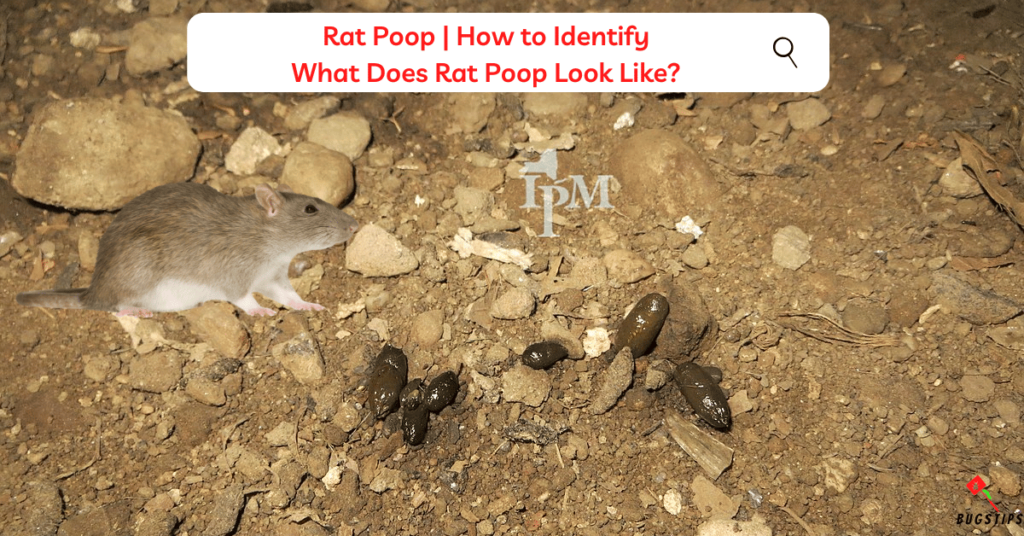
Here are some characteristics to look for when identifying rat poop:
Size and Shape
- Rat droppings are typically elongated and pointed at both ends.
- They are larger compared to squirrel droppings, usually measuring around 1/2 inch long and 1/8 inch in diameter.
- The shape is often described as resembling a capsule or an oblong pellet.
Color
- Fresh rat droppings usually have a dark brown color.
- Over time, their color may lighten if they have been exposed to sunlight for an extended period.
Texture
- Rat poop has a slightly softer texture compared to squirrel droppings.
- When fresh, it may have a moist consistency, but it can harden over time as it dries out.
Composition
- Rat droppings often contain remnants of the rat’s diet.
- They can include bits of food, insects, seeds, or other organic material.
- The composition may vary depending on the availability of food sources in their environment.
If you're unsure whether you're dealing with rat poop, there are a few ways to confirm your suspicions. One way is to look for other signs of a rat infestation, such as gnaw marks on wood or wires, or rat tracks in dust or dirt. Another way is to use a black light to detect the presence of urine, which will glow under the light.
Related Article – Rats Nest Explained | Your Infestation Solution
Rat Poop
Is Rat poop Dangerous?
Rat droppings can carry various diseases that can be harmful to humans.
Some of the notable diseases associated with rat poop include leptospirosis, hantavirus, salmonellosis, and tularemia.
Contact with contaminated rat poop, either through direct touch or inhalation of dust particles containing dried rat feces, can lead to illness. Symptoms may include fever, chills, body aches, and respiratory problems.
Rat droppings may also harbor parasites, such as fleas, ticks, or mites, which can further transmit diseases or cause infestations in humans or pets.
Related Article – Can a Rat Bite Kill a Dog? Expert Guide
How Long Does Rat Poop Stay Toxic?
The length of time that rat poop remains toxic can vary depending on a number of factors, including the conditions in which the droppings are found and the type of bacteria or disease present in the feces.
In general, rat droppings can remain toxic for several weeks or even months, particularly if they are in a warm and humid environment.
Fresh rat droppings may contain a higher concentration of potentially harmful microorganisms compared to older droppings.
As time passes, the viability of pathogens in rat poop can diminish. However, even-aged droppings can still carry certain risks, especially if they have been exposed to moisture or if the environment is conducive to the survival of microorganisms.
The duration of toxicity can also depend on external factors such as temperature and humidity. Warmer and moister conditions can facilitate the growth and survival of microorganisms in rat droppings, prolonging their potential toxicity.
On the other hand, drier and less favorable conditions may lead to faster degradation of pathogens.
Where Do Rats Usually Poop?
Rats are opportunistic animals that can adapt to various environments, and they are known to defecate in a variety of locations, both inside and outside of buildings.
Here are some common areas where rats may poop.
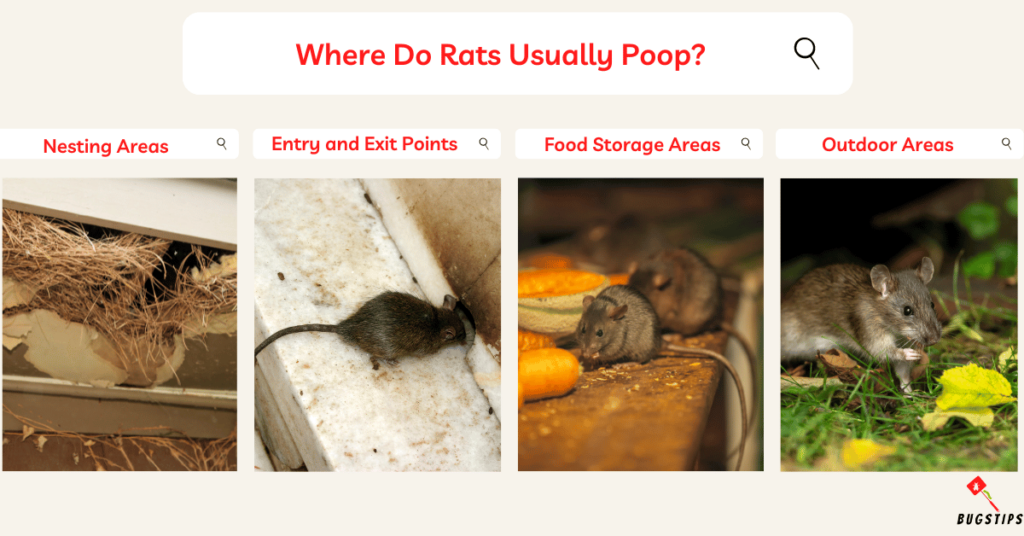
Nesting Areas
- Rats establish nests in hidden or secluded spaces, such as attics, basements, crawl spaces, or wall voids.
- They often designate specific areas within their nests as latrines, where they concentrate their bathroom activities.
Runways and Pathways
- Rats create pathways or runways along walls, fences, or edges of structures as they move around.
- These areas can become common spots for rats to defecate, leaving their droppings along their routes.
Entry and Exit Points
- Rats may leave droppings near entry and exit points, such as gaps in walls, holes, or cracks.
- These areas serve as access points for rats to enter or leave a structure or property.
Food Storage or Consumption Areas
- Rats are attracted to food sources, so you may find their droppings near areas where they feed or store food.
- This could include pantries, kitchens, cabinets, or areas where garbage or pet food is kept.
Outdoor Areas
- Rats can also leave their droppings in outdoor spaces.
- Common outdoor locations for rat droppings include gardens, sheds, compost piles, or underneath decks or structures.
Does Rat Poop Smell?
Rat poop, along with their urine, can emit an unpleasant smell. The combination of rat droppings and urine can contribute to an offensive odor that lingers in your home or the affected areas.
The smell can be particularly noticeable in enclosed spaces or areas with poor ventilation.
Fresh rat droppings and urine have a distinct musky odor that is often described as pungent or foul.
This smell can intensify as the droppings and urine decompose or if the infestation is significant.
How Many Times Does a Rat Poop a Day?
Rats are known to be prolific poopers, producing a relatively large number of droppings each day.
On average, rats produce between 30 to 50 droppings per day, although the exact number can vary depending on a variety of factors.
The number of droppings a rat produces each day can vary based on its size and species, as well as its diet and environment.
For example, a larger rat may produce more droppings than a smaller one, and a rat with a high-protein diet may produce more droppings than one with a lower-protein diet.
It’s also worth noting that the number of droppings a rat produces is generally less than that of a mouse. Mice are known to produce between 40 to 100 droppings per day, which is more than the average number of droppings produced by rats.
Do Rats Eat Their Poop?
Rats have a unique behavior known as coprophagia, which involves eating their own feces. This behavior may seem unusual, but it serves a purpose for these rodents.
Rats have a specialized digestive system that allows them to extract additional nutrients from their food by consuming their poop.
When rats eat their feces, they have another opportunity to break down and absorb nutrients that were not fully processed during the initial digestion.
By engaging in coprophagia, rats can extract carbohydrates, protein, and other essential nutrients from their droppings.
This behavior helps them maximize their nutrient intake, especially in situations where food sources may be limited or scarce.
It’s worth noting that rats may not limit their coprophagia to their own poop alone. They may also consume the feces of other animals, such as dogs, as a way to access additional nutrients.
If you have a pet rat or pet mice, it is crucial to ensure they receive a proper diet that meets their nutritional needs. High-quality commercial rat food, supplemented with fresh fruits, vegetables, and occasional treats, can help maintain their health and reduce the likelihood of coprophagia.
Related Article – 16 Powerful Scents That Repel Chipmunks
How To Clean Up Squirrel Poop and Rat Poop
Cleaning up squirrel poop and rat poop requires careful attention to safety and hygiene.
Here are some tips on how to safely and effectively clean up these droppings.

Wear Protective Gear
- Before you begin cleaning up any droppings, it’s important to protect yourself from potential exposure to harmful bacteria and diseases.
- Wear gloves, a mask, and protective eyewear to avoid direct contact with the droppings and to prevent inhalation of any dust or particles.
Use Disinfectant
- Use an antibacterial and disinfectant cleaning product to clean the affected area thoroughly.
- You can also use a bucket filled with warm, soapy water to clean the area.
- Dip a cloth or sponge into the solution and use it to clean the area thoroughly.
- Spray the urine and droppings with a bleach solution or an EPA-registered disinfectant to kill any remaining bacteria or viruses.
- During the cleanup process, pay attention to the surrounding areas as well.
- Check for any signs of infestation, such as nests or entry points, and clean and disinfect those areas as needed.
Dispose of Droppings Properly
- Bag the droppings and any contaminated materials securely in a sealed plastic bag.
- Dispose of the bag following local waste disposal regulations.
- Avoid placing it in regular household trash bins.
Wash Your Hands and Gloves
- After completing the cleanup, remove your gloves and dispose of them properly.
- Wash your hands thoroughly with soap and warm water for at least 20 seconds.
- This step is crucial to eliminate any potential pathogens that may have come into contact with your skin.
Sweeping or vacuuming droppings can release dust and particles into the air, increasing the risk of inhalation. Instead, use a damp cloth or paper towel to pick up any droppings, and dispose of them in a sealed plastic bag.
Related Article – Mouse in Bedroom Can’t Sleep? | 7 Powerful Solutions
What Can Be Mistaken for Mouse Poop?
Many people mistakenly identify certain droppings as mouse poop. It’s important to be able to identify the differences to accurately determine the presence of mice.
Here are some droppings that can be mistaken for mouse poop.
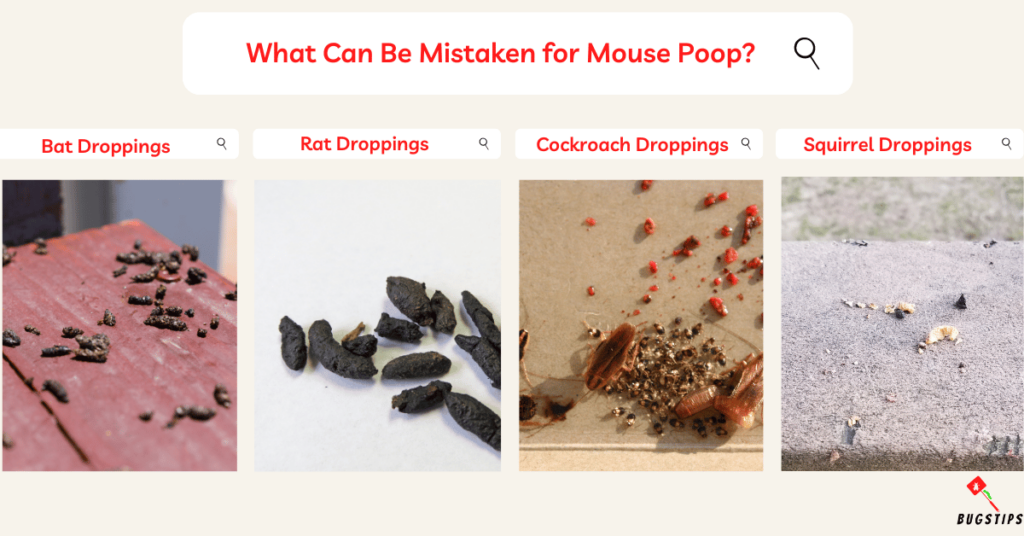
Bat Droppings
- Bat droppings, also known as guano, are often similar in size and shape to mouse droppings.
- However, bat droppings tend to have a shiny appearance due to the presence of insect wings.
- Additionally, bat droppings may have a crumbly texture and can be found in areas where bats roost, such as attics or caves.
Rat Droppings
- While rat droppings are larger than mouse droppings, they can still be mistaken for each other.
- Rat droppings are typically more cylindrical in shape and have blunt ends, while mouse droppings are more cylindrical with pointed ends.
You May Also Like – The Fascinating World of Earwig Poop
Cockroach Droppings
- Cockroach droppings can resemble mouse droppings in terms of size and color.
- However, cockroach droppings are typically cylindrical in shape and have ridges or segmented markings.
- They may also appear more granular or speckled compared to the smoother texture of mouse droppings.
Squirrel Droppings
- Squirrel droppings can sometimes be mistaken for mouse droppings, especially if they are small in size.
- Squirrel droppings tend to be larger and have a more oblong shape.
- They also have a different color and texture, with squirrel droppings being lighter and less smooth compared to mouse droppings.
Final Thoughts
Knowing how to correctly identify and clean up different types of droppings is crucial for maintaining a safe and healthy environment.
By following the tips and guidelines outlined in this article, you can effectively identify and clean up squirrel poop and rat poop.
If you’re unsure about the type of droppings you’re dealing with, it’s best to consult a pest control professional for guidance. With the right knowledge and practices, you can create a cleaner, safer, and healthier environment for yourself and those around you.
So, now that you know how to correctly identify and handle squirrel poop and rat poop, be proactive and take the necessary steps to protect yourself and others.
FAQs
Can squirrel poop transmit diseases to humans or pets?
Squirrel poop can potentially transmit diseases to humans and pets. It’s important to avoid direct contact with squirrel droppings and practice good hygiene to minimize the risk of disease transmission.
Is it bad to touch mouse poop?
It is not recommended to touch mouse poop directly. Mouse droppings can carry harmful bacteria and viruses, so it’s important to wear protective gloves and follow proper sanitation practices when cleaning up.
How do you pick up squirrel poop?
When picking up squirrel poop, it is best to avoid direct contact. Use disposable gloves or a scoop to collect the droppings, and dispose of them in a sealed plastic bag.
Is rat poop dry?
Rat poop can vary in texture depending on its age and moisture content. Fresh rat droppings may be moist, but they can dry out and become more dry and brittle over time.
Can you tell how old rat poop is?
It can be challenging to determine the exact age of rat poop based solely on its appearance.
Is it bad to sleep near mouse poop?
Sleeping near mouse poop is not recommended. Mouse droppings can carry harmful pathogens that may pose health risks, especially if they are inhaled or come into contact with mucous membranes.
Do rats always poop in the same spot?
Rats may not always poop in the same spot. However, they may have preferred areas or latrine sites where they concentrate their bathroom activities.
Is rat poop hard or soft?
Rat poop can vary in texture. When newly deposited, rat droppings are often dark and soft. Over time, they can dry out and become more dry and brittle.
Is squirrel poop yellow?
Squirrel poop is typically not yellow. It is commonly brown in color, ranging from reddish or rusty brown to darker shades.
Resources – (for further reading)
University of Florida – ENY-224/DH044: Rat and Mouse Control
ScienceDirect – Coprophagy – an overview
Purdue University – Zoonotic Diseases: Mice, Rats, Hamsters, and Other Rodents



